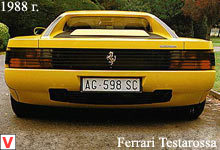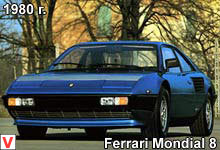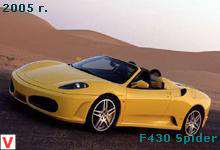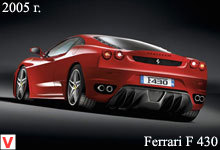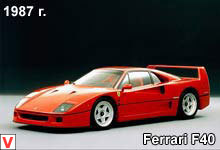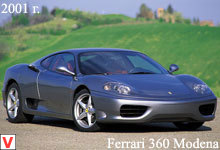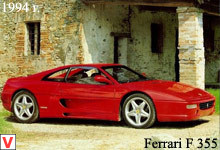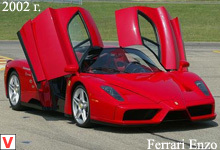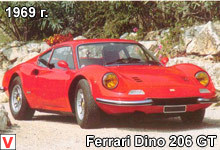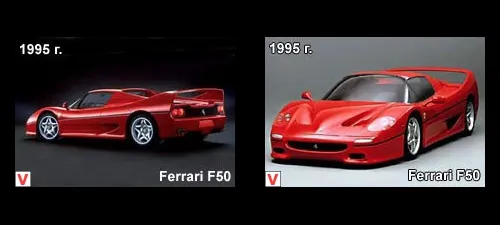
The Ferrari F50 is a mid-engined sports car produced by the Italian car company Ferrari from 1995 to 1997 at a factory in Maranello, Italy. Model F50 was a 2-seat 2-door coupe and roadster at the same time, due to its removable hardtop. The release of this model was associated with the upcoming anniversary (50 years) of the legendary company Ferrari. It is worth noting that the F-50 replaced the legendary F-40, which was the last model, the preparation of which was led by Enzo himself. Ferrari F50 was first introduced in March 1995 at the Geneva Motor Show, arousing genuine admiration for visitors to the exhibition. The design of the sports car worked Italian design studio Pininfarina.
Thanks to the wonderful creators of this company, the appearance of the car causes a lot of positive emotions. The body itself is made of composite materials and is very strong. Wheel Speedline 5-spoke wheels are made of durable magnesium alloy and are fastened with just one big nut - just like on Formula 1 cars. Tires for the sports car were provided by Goodyear. But not only appearance Ferrari F50 deserves praise. The filling of the car is also excellent.
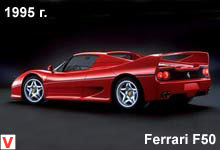
Sometimes they even say that when buying a Ferrari you pay only for the engine, and the rest is given as a gift. So, under the hood of an iron monster called Ferrari F50, there was a 12-cylinder engine with five valves per cylinder (i.e. 60 valves), which was taken from Formula 1, where it was used in 1992 and 1993 on the Ferrari F92 car. The engine has undergone, however, some improvements, namely - the engine capacity was increased from 3.5 to 4.7 liters. The power of such a power unit was 520 hp at 8500 rpm. Despite these impressive figures, the engine weighs only 198 kg. As for the transmission, the Ferrari F50 was equipped with a 6-speed manual gearbox.
This combination of engine and transmission allowed the sports car to accelerate to 100 km / h in 3.87 seconds. The maximum speed was 325 km / h. But that's not all. We now turn to the suspension of our handsome sport, with its very interesting design.

In fact, at the heart of the Ferrari F50 is an engine with a box in which passengers are accommodated. How does this work? To the box, completely made of composite material, the engine with the gearbox is attached to the rear. As a result, the engine and the box, rigidly interconnected, constitute a single whole, to which the front and rear suspensions, as well as the body, are already attached. Note that this design for the civil automotive world was used for the first time.
Before this could be found only in Formula 1. Go ahead on the suspension. Another feature is the location and fastening of shock absorbers and springs. They are located horizontally, with something behind and rest against the engine. The shock absorbers themselves - gas and manufactured by Bilstein. Naturally, the work of the suspension is designed to monitor electronics. Now consider the braking system of the car.

It may seem strange to some and even consider it a minus that there is no anti-lock braking system (ABS) on the Ferrari F50. But the designers of Ferrari do not think so and explain this by the fact that the driver on a sports car should feel the effort on the pedals, and the ABS will only interfere with complete unity with the car. Brakes at the F50, of course, ventilated disc both front and rear. Regarding the safety of the car can be noted the fact familiar to Ferrari that there are no airbags. Hope can only be on a solid body and belts. Not spared model F50 and purely sporting passions company Ferrari.
In 1996, the racing prototype of the car was released under the name F50 GT, which was developed to participate in competitions series BPR Global GT. Of the external changes can be noted new rear spoiler. As for the technical characteristics, the engine power of the sports car was increased to 750 hp. at 10,500 rpm, the maximum speed was 380 km / h. Acceleration to 100 km / h took only 3 seconds.
However, the model decided not to run in production. In total, 3 F50 GT cars were assembled: one prototype and two were assembled to order for private clients. The latest Ferrari F50 was released in July 1997.
